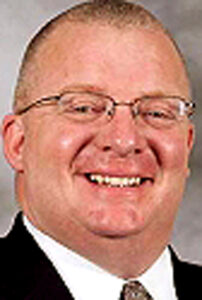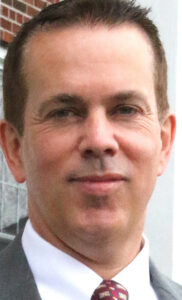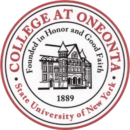Reprinted From This Week’s
Hometown Oneonta, Freeman’s Journal
SUNY Over Hurdle
On Reopening Plan
Enough Agree On 20% In-Person Classes
By JIM KEVLIN • Special to www.AllOTSEGO.com


The stumbling block is gone, it seems.
 Enough faculty members have volunteered to teach 20 percent of the in-person, “dual modality” classes called for in SUNY Oneonta’s plan to reopen on Feb. 1, 2021, according to David Lincoln, president of the local chapter of the United University Professions (UUP).
Enough faculty members have volunteered to teach 20 percent of the in-person, “dual modality” classes called for in SUNY Oneonta’s plan to reopen on Feb. 1, 2021, according to David Lincoln, president of the local chapter of the United University Professions (UUP).
“That’s correct,” said SUNY Oneonta President Dennis Craig when asked about Lincoln’s statement.
Teaching in-person – and in a “dual modality” mode, with a video camera in the back of the classroom – provoked opposition last month when the first draft of a campus reopening plan, put together by a COVID Response Team named by Craig on his arrival from SUNY Purchase in mid-October.
A continuing conversation between the administration and faculty, staff and student leaders is ongoing, said the president. A Rapid Response Team developed the plan, chaired by finance VP Julie Piscitello and Provost Leamor Kahanov, and has involved 50 people.
“These issues and these times are stressful for all of us,” Craig said. “Even when we don’t agree, there are many things we do agree on. I hope the community sees the rigorous debate as something we value and ultimately will make our plan stronger and our community stronger.”
The local reopening plan for the spring semester is due at SUNY headquarters in Albany on Dec. 10, but Craig, Lincoln and Oneonta Mayor Gary Herzig all emphasized: How it rolls out will depend on a state of the COVID-19 threat at the time.
If the COVID threat is still strong, Craig reaffirmed, it’s possible Governor Cuomo would roll back the date to March 1 or even later.
If, with prospective vaccines being announced almost daily – by Moderna, Pfizer and AstraZeneca in the past week alone – the virus is in retreat, then that would guide the scenario.
“That’s something that will be determined by conditions on the groups in January and February,” Craig said this week, “by the data and the science.”
“When you look at the numbers,” asked Lincoln, “are we really going to open in the spring? I have no idea. I think we need to continue to plan” for whatever may happen.
“Needless to say,” said Herzig, echoing the president’s perspective, “the campus reopening, students coming back to Oneonta, is a very important part of who we are, culturally, economically, in every way. That said, we all agree we only want to reopen in a way that’s smart and safe.”
Lincoln, whose UUP chapter represents more than 600 on-campus professionals, said differences remain, but he was reassured by a Zoom “town hall meeting” with his membership that the administration will listen and respond to concerns.
However, he said, the UUP is being guided overall by 25 points contained in a “Be Smart, SUNY Oneonta” petition posted on line Nov. 15. By earlier this week, about 750 people had signed it, many anonymously.
At issue is whether faculty are being told how to participate in the reopening, or being asked, on many points, but particularly in the case of “dual modality,” Lincoln said.
The Administration told him, three times, “it’s a goal – 20 percent,” he said. “They are close enough. There is no mandate. They have reached a goal close enough to that 20 percent.”
There’s no one way of looking at risk, said Lincoln, a retired OPD firefighter who was assigned to lower Manhattan in the days after 9/11. “How I look at risk vs. benefit is probably different” from that of many UUP members.
Bill Wilkerson, poly-sci professor and Faculty Senate president, wasn’t available to give a sense of faculty sentiment, but Keith Schillo, one of the professors behind the petition drive, agreed the number of volunteers was near 20 percent, adding, “We have no argument with people who volunteer to teach face-to-face.”
This past Monday, he said, he and allies presented a plan to address “two major issues”: One, the quality of dual-modality teaching and, two, “health, safety and well-being.”
“The 20 percent goal was not the only issue,” he said.
Jennifer Regg, Lincoln’s counterpart at the CSEA, which represents officer workers and other non-faculty staff, said her membership is focused on safety. “I’ve been working with management,” she said. “We’ve got members on a couple of the committees. We’re trying to do our best to get our concerns voiced.”

